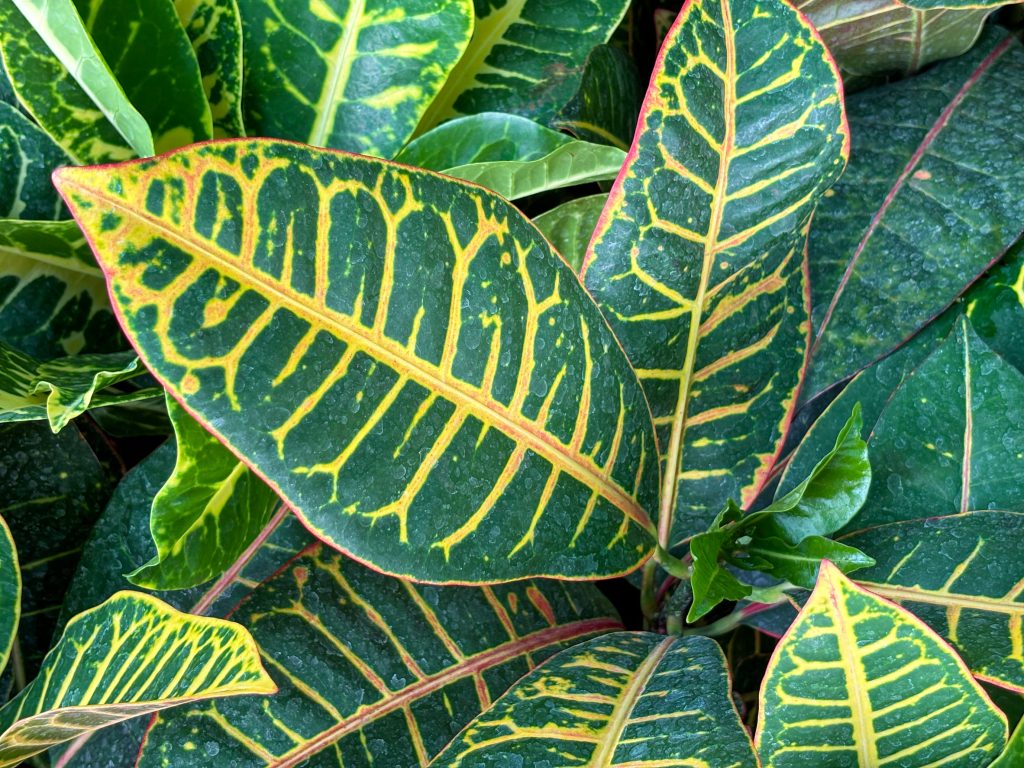Croton are known for their bright, thick, leaves. They come in many shapes, sizes, and patterns, usually striped or spattered with colors such as yellow, red, pink, and black. The name Croton comes from the Greek word for ‘tick,’ as its seeds have a similar appearance to the insect. Native to the humid tropics of Asia and the Pacific regions, there are over 1,100 species of Croton! They can reach up to 10 feet tall in the wild, but inside the home they stay about 3-8 feet tall and 3-6 feet wide. Crotons can be a bit high-maintenance, but once the growing conditions of their natural habitats are met, they get less fussy. All varieties are capable of blooming when grown outdoors, but they rarely do so when indoors. This plant is moderately toxic to both animals and humans, so it’s best to keep them out of reach from your kids and your pets. It can cause abdominal discomfort, vomiting, and diarrhea. Its sap can also cause skin irritation.
Crotons require bright, indirect lighting. The more sun exposure they receive, the brighter their foliage will be.
Water with filtered water when the top 25%- 50% of soil is dry.
Crotons prefer high humidity, between 40%- 60% depending on species. Low humidity can cause leaf drop. These plants are adverse to cold, be sure to keep your Croton away from cold drafts, in temperatures between 60- 80 degrees.
The best way to propagate Crotons is by stem cutting. 4-6-inch stem right above the leaf node, making sure the cutting has at least three leaves. Place in water or soil, and keep in a sunny spot. They can also be propagated by division- they sometimes produce shoots separate from the parent plant. These can be potted and planted independently once developed.
